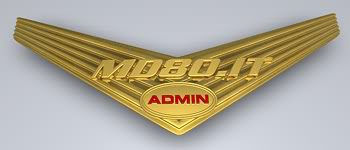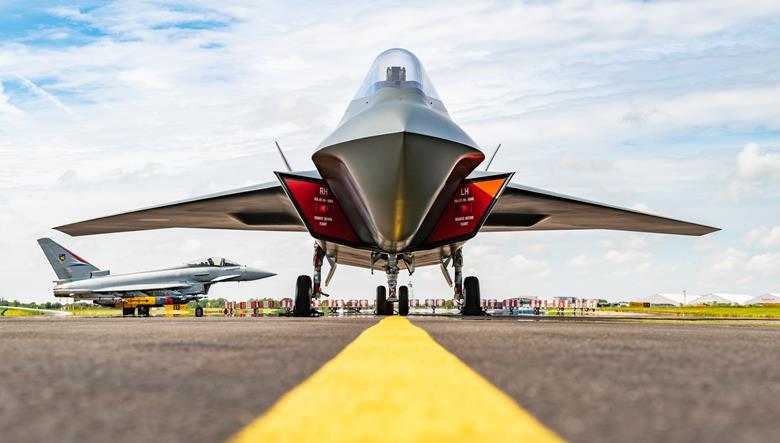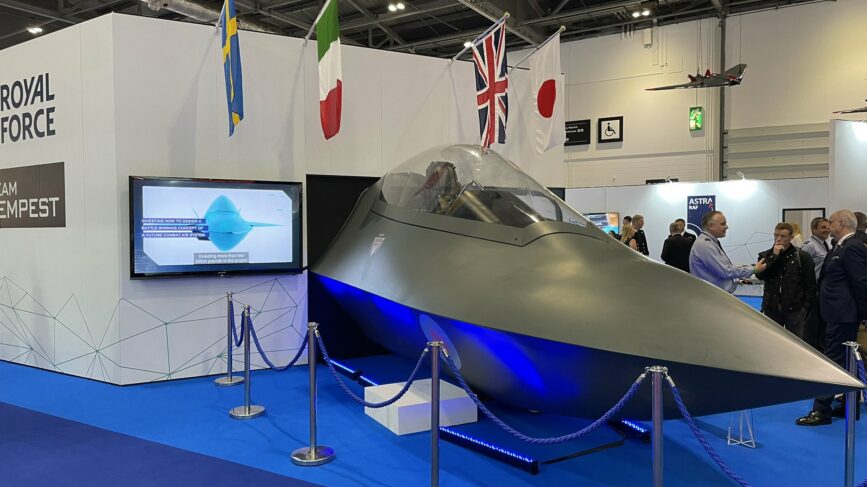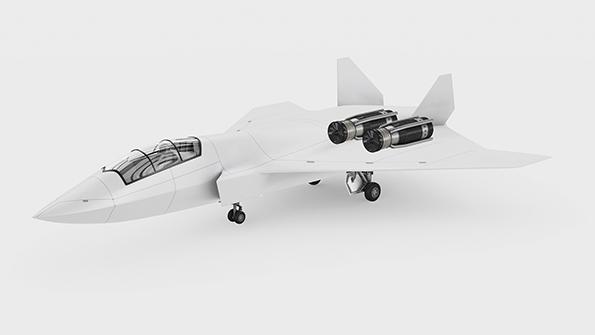UK Advancing Tempest Sensor Suite ...
Tony Osborne - February 03, 2022
 The Tempest’s Isanke system aims to integrate, fuse and process onboard data from the platform’s numerous sensors, including its radar and defensive aids system.
The Tempest’s Isanke system aims to integrate, fuse and process onboard data from the platform’s numerous sensors, including its radar and defensive aids system.
Credit: Leonardo
Advanced materials and novel approaches to data processing are influencing a step change in development of the sensors for the UK-led Tempest Future Combat Air System.
Progress made in that development by the UK-based defense electronics unit of Leonardo, through the UK’s Future Combat Air System Technology Initiative (FCAS TI), is leading toward creation of what the company calls an
Integrated Sensing and Non-Kinetic Effect system (
Isanke).
Onboard sensors such as the radar, those associated with defensive aids suites (DAS), infrared search-and-track (IRST) and electronic support measures will no longer be siloed but will instead be fully integrated and work together through an advanced form of data fusion.
“Whenever the pilot is making a decision, that decision will be informed by the information from all of the sensors,” Andrew Howard, Leonardo director for major air programs and the company’s senior responsible officer for the Tempest program, tells Aviation Week.
This approach, he says, will give pilots a “more textured understanding of the combat space” than previous-generation systems. Past integration efforts, he says, were “relatively light . . . [with] no attempt to extract shared value from those separate sensing capabilities.”
Integrating all the sensors to work together “will unlock value from the platform . . . [and] deliver a range of capabilities that we have not previously put together,” he adds.
At Isanke’s heart will be the Multi-Function Radio Frequency System (MRFS) - he name given to the future radar system - which promises longer-range performance, uses a different type of antenna and features a new generation of materials for fighter radars.
Little is known about the configuration of the MRFS, but Howard says the materials used and other elements of the Isanke system exceed the capabilities of gallium arsenide and gallium nitride semiconductors used in current active, electronically scanned array (AESA) radars, and offer “substantial improvements” over those used on the Eurofighter Typhoon.
The materials enable miniaturization of components, boost conductivity and allow improved levels of heat management, all critical requirements on a low-observable platform.
As well as conducting traditional missions such as fire control, the sensor is also likely to be capable of electronic attack.
Other onboard elements to be linked into Isanke include the DAS, IRST and electro-optical (EO) targeting systems.
Sensors will be integrated and embedded across the airframe, with miniaturization allowing more capability to be squeezed into different parts of the airframe to “create a bigger output than we have ever achieved previously,” Howard says.
In 2019, a year after the Team Tempest industry partnership was established, Leonardo revealed it had developed new radar receiver/warner technology with improved direction-finding performance that was 1/10th the size of current systems and provided a taste of its capabilities.
The integration effort will need to have significant onboard computing power as its backbone, with Leonardo taking lessons from the commercial information technology sector about data management and processing techniques.
The expectation is that the platform will scoop data from the air at much higher rates than current platforms.
“Traditionally, when a DAS has seen a threat, it has simply reacted to that threat itself,” Howard says.
But with the Isanke system, the DAS could examine the threat with the other aircraft sensors, “seeking to triangulate the information,” he adds.
The combination of sensors could then decide how best to react to the threat, either through a maneuver or by releasing a countermeasure, he suggests.
“The pilot for the most part won’t know the source of the information—they will simply know they are getting the best information,” Howard says.
Like the rest of the Tempest, development of the Isanke system is being shaped around the need for exportability so that it can be adapted for different customers.
The system will likely make use of the Pyramid open-systems architecture envisaged for the Tempest combat aircraft and its uncrewed adjuncts, such as the Mosquito Lightweight Affordable Novel Combat Aircraft.
Isanke would also be scalable with elements likely to equip the Mosquito and that could find their way into earlier-generation platforms such as the Eurofighter Typhoon, in line with the UK’s Combat Air Strategy goals.
Leonardo is also exploring opportunities to work with foreign partners, including Italy, Sweden and, increasingly,
Japan (*).
Leonardo’s defense electronics business in Italy specializes in the development of IRST and EO systems, and Howard describes radar development in Italy as world-class.
And Saab’s development of electronic warfare systems on the new Gripen NG fighter is “very complementary” to the Tempest plans, he says.
Work is also underway to see what Japanese industry can bring to the project, given its wide experience in electronics - discussions are in progress about codevelopment, workshare and expertise.
In line with the wider Tempest project, Leonardo is adopting digital tools to speed up Isanke’s development and mature the technology in readiness for key investment decisions by mid-decade—in time for the Tempest to reach the front line by the mid-to-late 2030s.
Those efforts will be supported with testing of all Isanke’s elements on the highly modified Boeing 757 Excalibur flight testbed being developed by 2Excel Aviation contracted by Leonardo.
Nonetheless, Howard says, this year will be important for maturing the technology, reaching a stable model of development with the international partners and aligning the work with requirements.
“The thinking is that work over the next year will give confidence to government to make bigger investments in the program . . . and press the accelerator harder,” Howard says.







